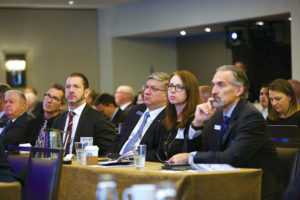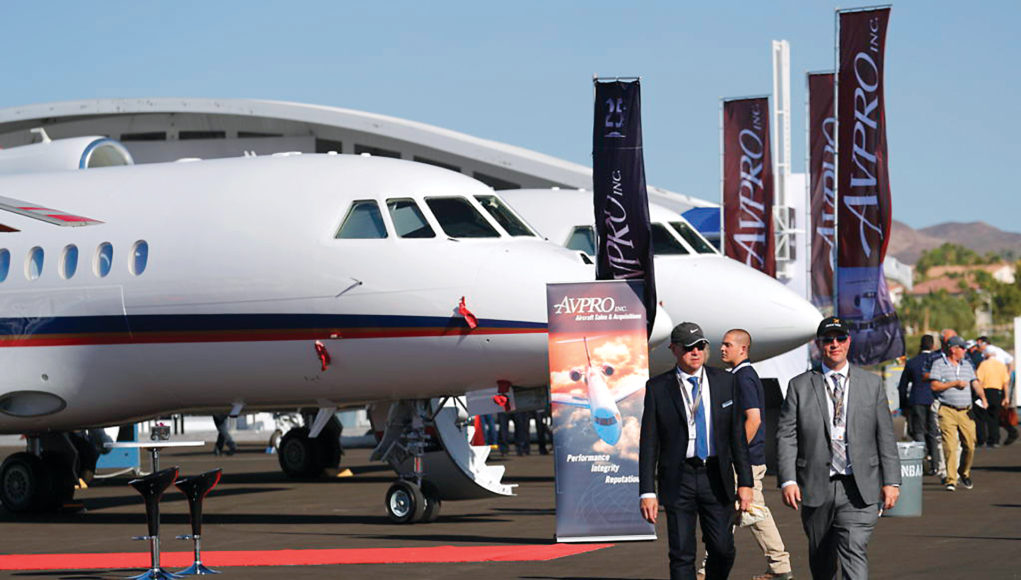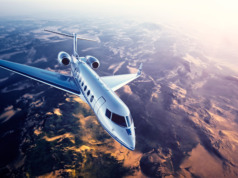Gatherings of eagles, literally or figuratively, make for fascinating times. Normally reclusive, eagles are among nature’s most evolved and territorial hunters. When eagles gather, whether to share fish stories about the big one they captured, or the one that escaped their grasp, the social interaction is typically energized and full of camaraderie.
Business aviation leaders share some of these same characteristics — gatherings of business aviation’s “eagles,” whether at sprawling trade conventions like NBAA-BACE and EBACE or in more intimate surroundings like JETNET iQ Summits and other industry conferences, provide unique opportunities to share stories and compare insights.
Where some see only issues, others sense opportunity. This is the nature of the evolving business aviation industry.
One of the most fundamental issues facing the business aviation industry continues to be oversupply – manifested in aggressive factory pricing for most new aircraft, declining residual values for pre-owned aircraft, and lower industry order backlogs and book-to-bill ratios. In today’s “get-it-done” world of quarterly earnings reports and near-rabid desire for immediate results, who would have imagined that we still would be collectively discussing industry recovery 9+ years after the dark days of September 2008?
The opportunities? Signs of improving business aviation market conditions are widespread:
- For the first time in more than 2.5 years, the sentiment of fixed-wing turbine aircraft owner/operators is trending upwards, as are new aircraft purchase intentions.
- Available pre-owned inventory levels are at their lowest in 9.5 years. Young inventory – represented especially by aircraft with an impeccable pedigree, a single-owner, on warranty and cost-per-hour programs, and 5 years or less since initial factory delivery – has been snapped up by savvy buyers recognizing historically attractive deals presented by today’s marketplace.
- At the business aircraft and aero-engine OEMs, capital investment and R&D spending are brisk. Quietly, stoically, and perhaps most fundamentally, turbine aircraft utilization in the key U.S. and European markets has been trending upwards, fueled by a solid, albeit unspectacular, rebound of the two regions’ economies. Business and consumer confidence are comparatively robust, buoyed by higher stock market valuations and expectations of more favorable corporate tax regimes in the future.
- In conversations around the industry, there is a general feeling that market conditions have improved, with more to come.
What’s not to like about today’s market? Well, to be honest, a few things, some much more prominent than others:
- Aircraft owners have seen their aircraft equity effectively evaporate as asset values have plummeted in an historically unprecedented fashion, in many cases locking them into their existing aircraft – for better or for worse.
- Trade-in prices, and the gap between new and pre-owned valuations, remain problematic at best, removing the impetus for many owners to replace their aircraft with a new model, at least for the time being.
In what was once a relatively predictable 5-year replacement cycle – driven to a large extent by buyers’ desires to stay “in-warranty” – aircraft purchase behaviors clearly have evolved, with some well-heeled buyers now even opting to purchase pre-owned aircraft for the first time. This created a temporary, white-hot window of opportunity in relatively young pre-owned aircraft, which has mostly closed for the time being.
Aircraft appraisers and industry prognosticators have had a tough time earning a living in recent times, buffeted by rapidly fluctuating market conditions, imprecise and out-of-date transaction data, and hyper-aggressive competition for new aircraft sales that have disrupted the traditional valuation equations. The business aviation industry continues on a slow, steady recovery trajectory from the seismic shock of the 2008 financial crisis, with many asking the question: “Are today’s market conditions the new reality?”
Evidence points in different directions, but the signs of a return to more normal, predictable markets are quite apparent. Tightening inventory, especially of the most attractive late-model aircraft, already has occurred. Aircraft utilization has recovered to pre-2008 crisis levels, at least in the all-important U.S. market. Still problematic are aircraft residual values, which have experienced an historical drop in the past 18-24 months, weighed down by classic market oversupply conditions and hyper-aggressive OEM deal-making in the battle to sell available production slots.
With 40+ model choices of new business aircraft, buyers never have been so teased by choice, and chased after by hungry (some might even say starving) new aircraft sales professionals. Are there too many models and still too much production for the level of demand today? We would say “yes,” suggesting that the buyers’ market will continue, at least for the next couple of years.

We are on the verge of a revolution in unmanned aerial systems, drones, and the like – this is likely to represent structural change in the way goods and people are moved, especially in urban and short-haul markets. Demographic changes could be fundamental, including the rise of an entire generation of Millennial customers seemingly unencumbered by the traditions and desires for “asset ownership.” The promise of disruptive shared-economy business models – leveraging the power of the internet – is everywhere apparent, although what remains to emerge is a profitable, defensible business model that could crack open the market to a new and much broader generation of users.
Utilization rates of business aircraft average about 350 hours per aircraft per year across all platforms and business models, at least according to ongoing quarterly JETNET iQ Surveys of business aircraft owners and operators. To put this into some perspective, commercial aircraft tend to be flown 8-10X more hours, and even higher in some long-haul market applications. Unlocking some of this capacity and channeling it through innovative new business models are entrepreneurial opportunities to be grasped today and in the future.
The bottom line? Despite recent fluctuations and widespread concerns about aircraft values, business aviation plays an indispensable role in today’s – and the future’s – economy. Fueled by an insatiable desire to make more efficient use of their time and increase their levels of personal control and mobility, entrepreneurs know that the best and most predictable future is one they imagine and invent themselves. Business aviation has a vital role to play in this future.
For the time being, business aviation “eagles” may be mostly white-topped and balding, but a new generation of leaders is on the rise. Gatherings of eagles, wherever they occur, provide unique opportunities to explore and experiment with the many different value propositions of business aviation – still and by far the most personal and effective form of high-speed, point-to-point air transportation. BAA
Rolland Vincent is President of Rolland Vincent Associates, an aviation and aerospace market research, forecasting, and strategic planning firm. His nearly 40 years of experience includes work with manufacturers, commercial operators, and international organizations.






